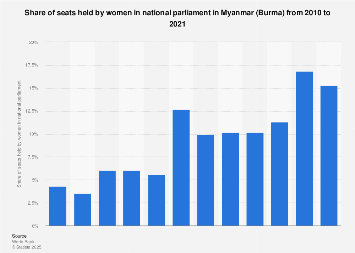In January 2020, the U.S. Departments of State and Commerce published regulations transferring certain firearms, ammunition, components, and accessories from controls under the International Traffic in Arms Regulations (ITAR) to the Export Administration Regulations (EAR). Specifically, State amended Categories I, II and III of the U.S. Munitions List (USML) to transfer certain firearms, including non-automatic and semi-automatic firearms up to .50 caliber (12.7mm) inclusive, from the USML to the Commerce Control List (CCL) under the EAR, along with certain ammunition, parts, accessories and attachments. At the same time, Commerce issued companion regulations establishing controls for the newly transferred items under the EAR. The result of these parallel actions by State and Commerce is a complex, bifurcated system of export controls on firearms and related items. The firearms industry in particular must now navigate both the ITAR and EAR and understand when and how each set of regulations applies to specific products and transactions.
Following are five key points about the current ITAR and EAR regimes governing firearms and related items.
1. Firearms and Related Items Are Still Heavily Regulated Under the U.S. Export Laws, Even After the Transition of Many Items to the EAR. It is critical to remember that while many types of firearms are no longer subject to ITAR, they are still subject to significant regulation by the Commerce Department’s Bureau of Industry and Security (BIS) under the EAR. The EAR include most of the principal types of controls that applied under ITAR. While the details may be different (such as export classification numbers and procedures for filing license applications), the majority of responsibilities for U.S. exporters remain the same. Requirements under the EAR that apply to many types of firearms industry transactions include the following:
- The requirement to obtain export licenses for the export of most firearms and relates items;
- The requirement to obtain export licenses for the export of controlled technology (i.e., technical information about the development, production or use of an item) and the transfer of such technology to foreign persons in the U.S. (called a “deemed export”), including to employees of your company;
- The requirement to obtain licenses for reexports and transfers in foreign countries of controlled items;
- While Commerce does not formally regulate defense services as defined under the ITAR, Commerce has stated on many occasions that in performing services for a foreign party, a U.S. person may transfer controlled technology, and as such the performance of services related to controlled products, technologies or software may require BIS authorization if controlled technology is transferred in the process;
- Restrictions on selling/transferring items to parties on the BIS restricted party lists including the Entity List (think Huawei and ZTE), the Denied Persons List, and the Unverified List;
- If a product is manufactured abroad that incorporates a controlled U.S. component or is “bundled” with controlled U.S. software, if the value of the controlled U.S. items exceed the de minimis level in EAR §734.4 (25% for most countries) the foreign manufactured product becomes “subject to the EAR” and may be subject to U.S. export requirements in the foreign country;[1]
- If a product is manufactured abroad that is the “direct product” of certain controlled U.S. technology or software identified in EAR §736.2(b)(3), or produced in a foreign plant that is the direct product of U.S.-origin technology or software identified in §736.2(b)(3), the newly manufactured product becomes “subject to the EAR” and may be subject to U.S. export requirements in the foreign country;
- Restrictions on the use of products subject to the EAR in one of the prohibited end uses identified in EAR Part 744;
- Restrictions on selling or transferring items to countries subject to BIS embargoes set forth in EAR Part 746;
- Restrictions on selling items for certain “military end uses” or “military end users” in Belarus, Burma, Cambodia, China, Russia and Venezuela;
- Recordkeeping requirements under EAR Part 762; and
- If the U.S. company is being acquired by a foreign company, the fact that the U.S. company manufactures or possess firearms products and/or related technology will subject the transaction to enhanced scrutiny by the Committee on Foreign Investment in the United States (CFIUS) and may trigger a mandatory CFIUS filing by the parties to the transaction.
In addition, many firearms industry products continue to be regulated under ITAR, including for example:
- Fully automatic firearms (including firearms under .50 caliber (12.7 mm)) and fully automatic shotguns;
- Recoilless rifles;
- Many guns greater than .50 caliber (12.7mm) including guns, howitzers, artillery, cannons and grenade launchers;
- Firearms that use caseless ammunition;
- Certain precision guided firearms;
- Ammunition for guns and armaments controlled under the new USML Category II;
- Caseless ammunition manufactured with smokeless powder;
- Certain “tracer” ammunition employing pyrotechnic material; and
- Ammunition preassembled into links or belts.
Thus, while some of the requirements under the ITAR have been eliminated for some firearms and related items (such as the ITAR’s registration requirement), most of the general compliance requirements continue, but are administered through a different agency.
2. Parts, Accessories and Attachments Are Treated in Many Different Ways. While many firearms parts, components, accessories and attachments have been transferred to the EAR, many are still regulated under ITAR. Also, components, accessories and attachments transferred to the EAR are classified under a variety of different ECCNs or as EAR99. Manufacturers and distributors of these products must determine how the rules apply to each product. For example, the following items continue to be ITAR-controlled:
- Silencers, mufflers and sound suppressors;
- Barrels, receivers (frames), bolts, bolt carriers, slides and sears “specially designed” for the items covered under the newly revised USML Category I (a), (b) and (d);
- Drum and other magazines for firearms to .50 caliber (12.7 mm) inclusive with a capacity greater than 50 rounds, regardless of jurisdiction of the firearm, and specially designed parts and components therefor;
- Parts and components specially designed for conversion of a semiautomatic firearm to a fully automatic firearm;
- Accessories or attachments specially designed to automatically stabilize aim (other than gun rests) or for automatic targeting, and specially designed parts and components therefor;
- Parts and components specially designed for defense articles described in newly revised Category I (c) and (e);
- Certain ammunition handling equipment; and
- Gun barrels, rails, tubes, and receivers specially designed for the weapons controlled in paragraphs (a) and (d) of the revised USML Category II.
For items transferred to the EAR, certain firearms parts, components and accessories are controlled on the CCL and subject to licensing requirements, while others are classified as EAR99 and do not require a license under CCL-based controls. Manufactures of components and accessories must conduct a careful review of the regulations to identify the export classifications of their products and the export requirements that apply based on these classifications. If a company is not sure of the classification of its product, or if it wants a higher level of assurance, it can request a Commodity Jurisdiction determination (for ITAR items) or a Commodity Classification Automated Tracking System request (CCATS) (for EAR items) to obtain written confirmation of the product classification.
3. Controls on Technology and Deemed Exports. The EAR also regulate certain “technology” related to firearms products that are subject to the EAR. Generally, “technology” includes designs, drawings, specifications, technical manuals and similar technical information related to controlled products in both tangible and intangible form (including technical information in spreadsheets, PowerPoint slides, e-mails, Word documents, and CAD/CAM drawings). Controls on technology are one of the most challenging aspects of export compliance and a frequent source of export enforcement actions.
The CCL contains specific ECCNs for technology related to firearms, including: 0E501, 0E502, 0E504, 0E505, 0E602 and 0E982. Companies may be required to obtain licenses for the export of controlled technology depending upon the technology’s export classification and the foreign country involved. In addition, restrictions may apply (and licenses may be required) for the transfer of controlled technology to foreign nationals in the U.S. (called a “deemed export”), including to employees within your own company. BIS recommends that companies adopt controls within their computer networks to prevent foreign national employees from being able to access controlled technology in the company’s computer system, as well as to prevent all employees from inadvertently exporting controlled technology and software in laptops, iPhones and PDAs when traveling outside the U.S.
The EAR specifically address placing controlled firearms technology on the Internet. EAR §734.7(c) provides as follows:
(c) The following remains subject to the EAR: “software” or “technology” for the production of a firearm, or firearm frame or receiver, controlled under ECCN 0A501, that is made available by posting on the internet in an electronic format, such as AMF or G-code, and is ready for insertion into a computer numerically controlled machine tool, additive manufacturing equipment, or any other equipment that makes use of the “software” or “technology” to produce the firearm frame or receiver or complete firearm. Accordingly, such technology and software are prohibited from being posted on the internet unless an export license is obtained under the EAR.
4. ITAR Brokering Regulations Apply Event to Firearms Controlled Under the EAR. While most firearms .50 caliber and under are regulated under the EAR, the ITAR brokering regulations still apply to these products.
Under the Arms Export Control Act (AECA), the State Department has jurisdiction for the regulation of “brokering activities” for all items on the USML and the U.S. Munitions Import List (the “USMIL”). While most firearms .50 caliber and under are no longer on the USML, they are still listed on the USMIL and hence the “brokering” of such products continues to be regulated by the State Department’s Directorate of Defense Trade Controls (DDTC), under ITAR. (In addition, since these products continue to be listed on the USMIL, the permanent import of such items continues to be regulated by the Bureau of Alcohol, Tobacco, Firearms and Explosives.)
The ITAR brokering regulations are a broad set of requirements that place controls on performing “any action on behalf of another to facilitate the manufacture, export, permanent import, transfer, reexport, or retransfer of a U.S. or foreign defense article or defense service, regardless of its origin.”[2] If a party engages in “brokering activities” it will be subject to numerous requirements, including:
- Registration with the State Department;
- Obtaining licenses (called “approvals”) from the State Department prior to engaging in certain brokering transactions;
- The prohibition against engaging in transactions involving defense articles with the “proscribed countries” listed in ITAR §126.1; and
- Reporting and recordkeeping requirements.
The ITAR brokering regulations exclude activities by persons to facilitate the manufacture in the United States or export of items subject to the EAR. However, they still apply to most foreign manufactured firearms products. Thus, if a U.S. person (including its foreign subsidiaries and in some cases foreign persons) contemplates becoming engaged in transactions involving foreign-made firearms (including firearms .50 caliber and under) and ammunition, it should review the ITAR brokering regulations carefully to determine if any ITAR requirements apply to the transaction.
It should be noted that requirements under the ITAR brokering regulations may apply even at the beginning of involvement in a transaction. If a party is brokering or assisting others in the sale of foreign-made firearms, even just the commencement of the negotiations may require ITAR registration and advanced DDTC approval – it is not necessary to close the sale for requirements to apply. Also, under ITAR §129.7 and §126.1(e) no person may engage in or make a proposal to engage in brokering activities (or the direct sale of USML items) that involve a “proscribed country” listed in ITAR §126.1 – and if a party becomes aware of such activities that involve a “proscribed countries” he/she is required to immediately disclose the occurrence to DDTC under ITAR §§129.7 and §126.1(e).
In light of the broad scope of these requirements, any company that is engaged in an international firearms transaction, even as a sales agent, consultant, advisor or other intermediary, should be familiar with the ITAR brokering regulations.
5. Commerce Has a Substantially Larger Export Compliance Staff Than the State Department. DDTC has a highly effective and well-respected compliance staff (the Office of Defense Trade Controls Compliance), focused principally on investigating civil ITAR violations. However, the BIS Office of Export Enforcement, which focuses on EAR violations, is a much larger organization with agents in eight field offices across the U.S. and authority to carry firearms, make arrests, execute search warrants, serve subpoenas, detain and seize goods, and investigate both civil and criminal violations. Companies regulated by BIS under the EAR face more Special Agents and compliance analysts with greater resources at their disposal. Penalties are significant – the penalties under the EAR are effectively the same as ITAR – up to $1,000,000 in fines and 20 years’ imprisonment. Companies should expect that the risk of enforcement actions are likely to be greater under Commerce than State and plan accordingly.
As mentioned above, the firearms industry is now subject to a complex regime of export regulations, which now comprises both ITAR and EAR. Companies must account for all ITAR and EAR requirements that apply to their products and international transactions. This includes: (i) determining the export classifications of their products; (ii) assessing the licensing requirements that apply to their products; (iii) maintaining compliance procedures for license filing procedures, use of license exceptions, procedures for commodity classification requests, reporting requirements, and AES submissions; and (iv) analyzing planned business activities to determine if they trigger additional registration, licensing or reporting requirements under the ITAR brokering rules.
[1] Similarly, if controlled U.S. software is “comingled” with foreign-made software abroad, if the value of the controlled U.S. software exceeds the de minimis level in EAR §734.4 the comingled software becomes subject to the EAR and U.S. export requirements may apply to the comingled software in the foreign country. Also, if controlled U.S. technology is “comingled” with foreign technology abroad, if the value of the controlled U.S. technology exceeds the de minimis level in EAR §734.4 the comingled technology becomes subject to the EAR and U.S. export requirements may apply to the comingled technology in the foreign country. Note that there are certain commodities, software and technologies for which no de minimis treatment is permitted under EAR §734.4.
[2] Certain activities are excluded from the definition of “brokering activities” in ITAR §129.2(b)(2).





